
Увага! На сайті використовуються cookie файли.
The site uses cookie files
Даний сайт має вікове обмеження.
This site has age restrictions!
Я підтверджую, що мені, на жаль, давно виповнилося 18 років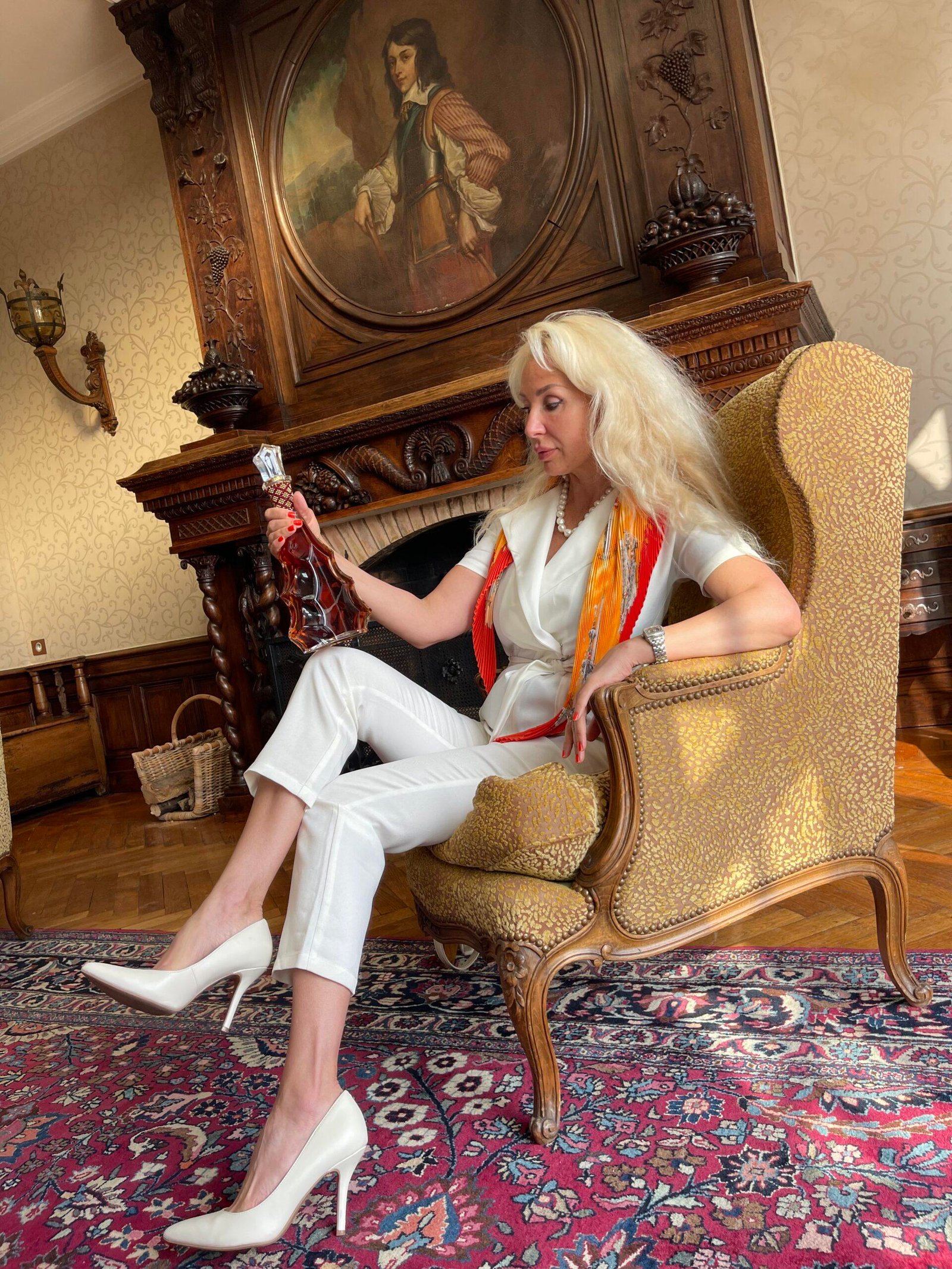
Nestled in the heart of France’s Cognac region stands a beacon of excellence in the world of fine spirits. For five generations, this family-owned house has been crafting liquid gold, bringing beauty and refinement to create emotions and pleasure for those who appreciate the finer things in life.
Recently, Camus announced a new mission in collaboration with Liquid Icons and the Gérard Basset Foundation. This collaboration aims to award The Alexa Camus Golden Vines® Scholarships in Spirits. This scholarship seeks to enhance the inclusion of historically underrepresented communities within the spirits industry and provide them with the prestigious option of a 5-day intensive training at the Camus Cognac House after they finish the WSET Level 3 Award in Spirits program, gaining firsthand experience and developing the knowledge and skills needed to excel in the spirits industry. The winners received a privilege reserved for a select few—a visit to the perfect cognac production, where passion meets precision and tradition dances with innovation.
Among the five winners was Drinks+ columnist and Wine Travel Awards Advisory Board member – Kateryna Yushchenko. We invite our readers to join her on an exclusive and exciting five-day journey into the world of Camus Cognac.
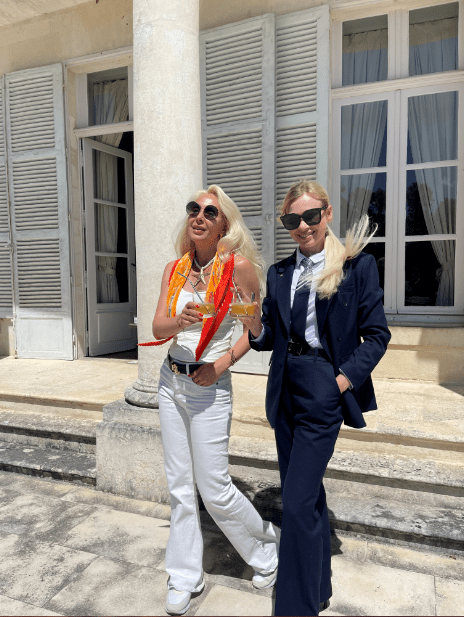
Stepping onto the hallowed grounds spanning an impressive 195 hectares in the heart of the Borderies cru, one is immediately struck by the breathtaking beauty of the rich tapestry of valleys and woods that unfold before the eyes. The landscape whispers tales of five generations of passionate makers, each leaving an indelible mark on this storied land.
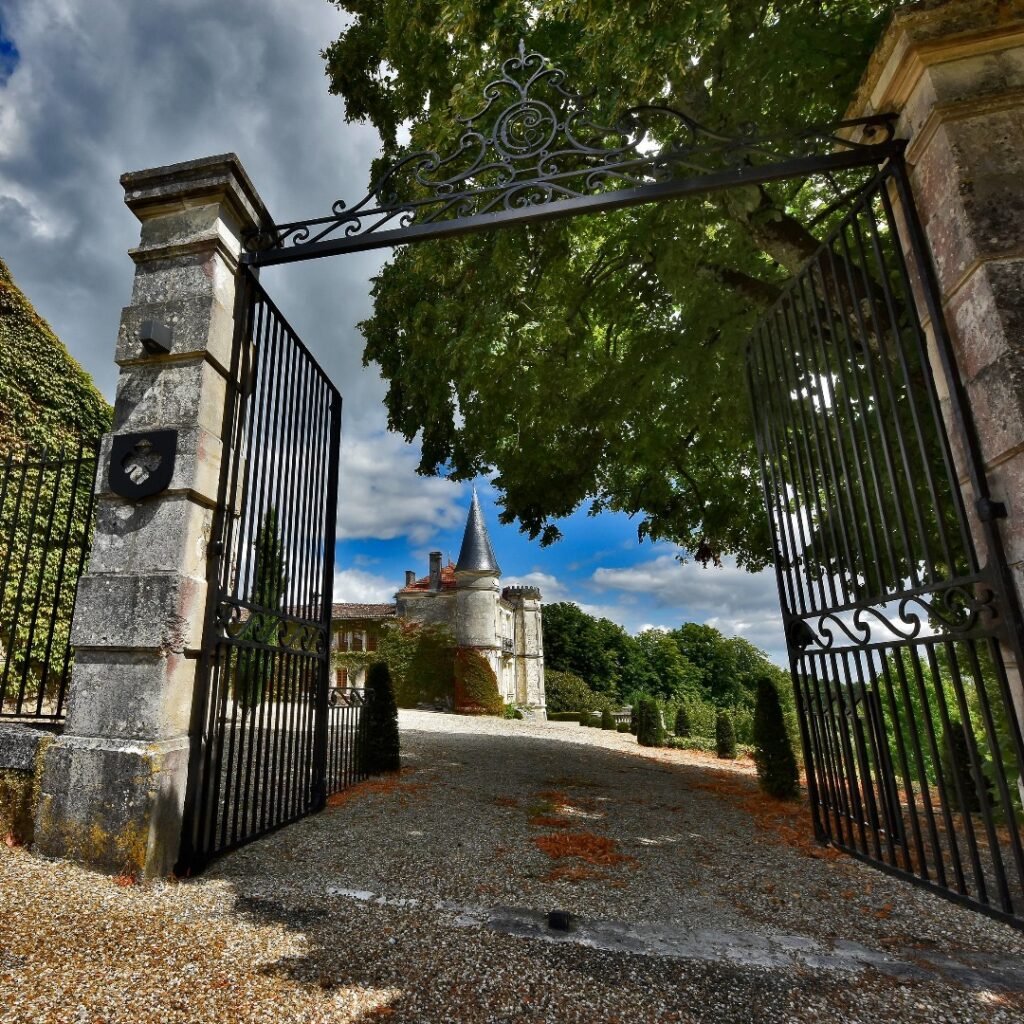
“Welcome to the birthplace of liquid emotion”, echoes the greeting as the journey begins.
Traversing the estate reveals the secret behind the intensely aromatic spirits – a mesmerising variety of soils that create a symphony of flavours. Six different types of soils or crus are present, with a focus on five main subsoils:
The Lagite vineyards on the hill are characterised by clay with grey chalk, while the other side boasts red clay with flint (silex) and deeper layers of flintstone and chalk. These diverse soils form the foundation of the complex flavour profiles. Each terroir contributes its unique personality to the final elixir. The flints in the soil, glinting in the sunlight, catch the eye – nature’s little flavour bombs, helping to create distinctive mineral notes in the spirits.
The vineyard management practices are equally fascinating. Double trunk pruning is employed, with average roots reaching up to 1.7 meters. Many old vines are maintained to preserve flavour complexity. Perhaps most intriguing is that the five distinct vineyard plots produce five different types of cognac, each harvested and stored separately to maintain its distinct characteristics.
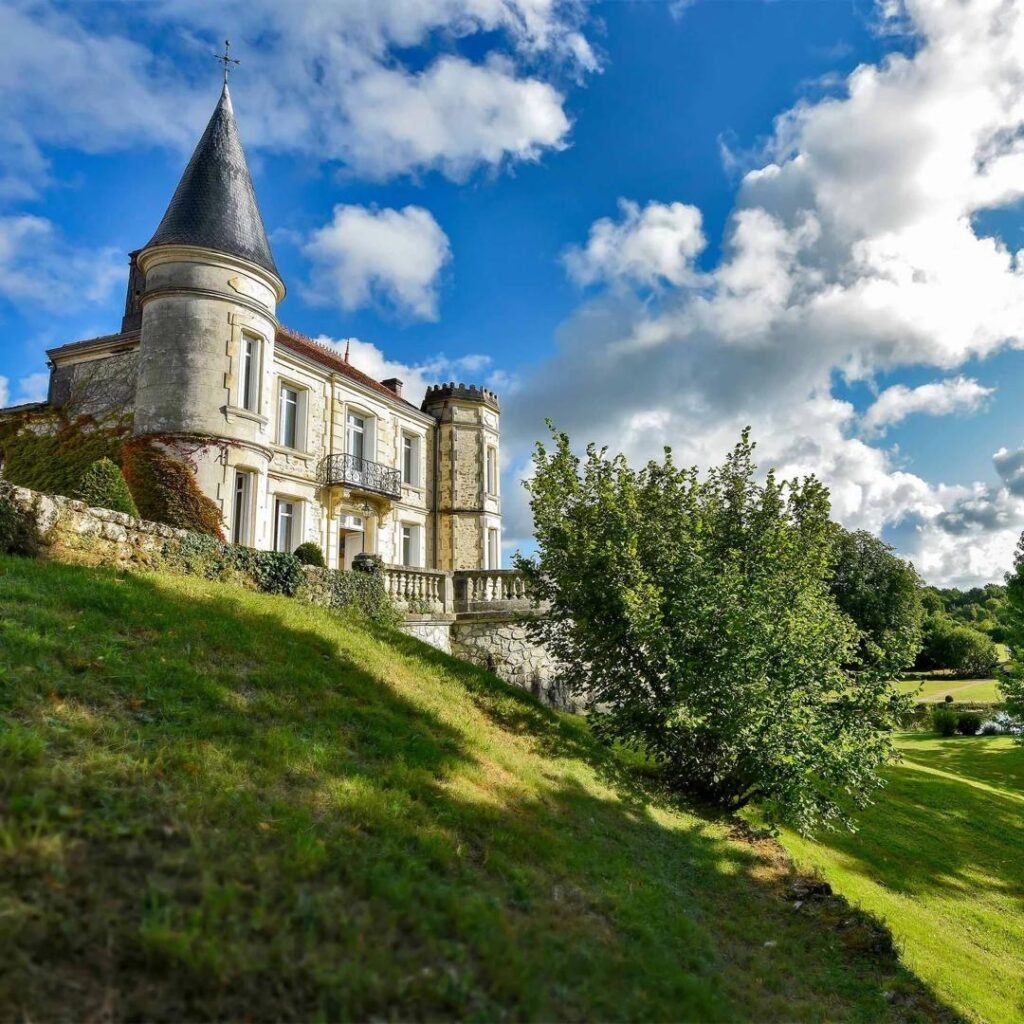
The day concludes at the Château du Plessis, where the first vines cultivated by the family still stand proud. The first tasting takes place over the vineyards bathed in the golden light of sunset. The complex aromas dancing in the glass are a testament to the diverse terroir explored throughout the day.
The second day dawns bright and clear, perfect for delving into the world of grape varieties. The journey begins in the heart of the vineyards, where rows upon rows of vines stretch as far as the eye can see. This hands-on learning experience allows for touching the vines, smelling the grapes, and truly understanding the art of grape cultivation.
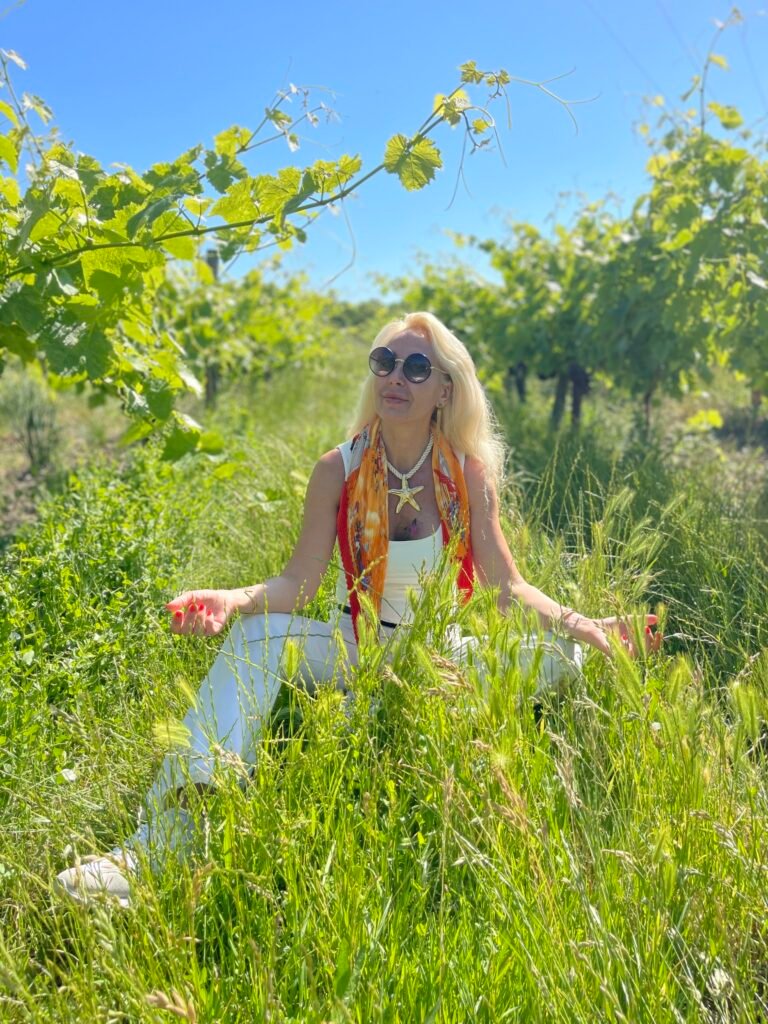
Ugni Blanc dominates with 95% of plantings, but the smaller plot of Folle Blanche vines truly captivates. “This is our secret weapon,” comes the explanation. “Temperamental to grow, but the eaux-de-vie it produces? Unparalleled aromatic intensity.” The house is actively working to increase the proportion of Folle Blanche in their vineyards, a bold move that speaks to their commitment to creating the most aromatic spirits in the world.
As the day progresses, the challenges and innovations in modern viticulture come to light. Climate change has pushed harvest dates earlier, requiring constant adaptation. “But we’re not just reacting,” they assure. “We’re proactively shaping the future.” A partnership with BNIC (Bureau National Interprofessionnel du Cognac) is underway to develop grape varieties resistant to climate extremes and diseases, ensuring the longevity of their craft.
The harvest process is a marvel of efficiency, typically starting in September and lasting three weeks. Mechanical harvesting begins at 6 a.m., rushing to capture maximum acidity and freshness. Rapid pressing follows to avoid oxidation. Acidity and alcohol control are crucial aspects of production. The aim is for a maximum of 12% alcohol, with total acidity controlled to an average pH of 2.3. The target sugar level results in 10% alcohol for fermentation – all part of controlling maturity to improve quality. An experimental vineyard showcases three types of yeast used to create different aroma profiles in their wines. This is where science meets art, with each yeast strain revealing different grape characteristics and creating unparalleled complexity in the spirits.
The fermentation process is equally fascinating. It starts to develop aromas quickly, with temperature maintained at 25°C, then chilled to 10°C to stop the process. Before distillation, the wine is decanted and lightly filtered, keeping some lees to enhance the aromatic profile. The day concludes with a blind tasting of wines produced with different yeasts. The variation in aromas and flavours is astounding, offering a newfound appreciation for the meticulous care that goes into every step of the production process.
The third day immerses visitors in the magical world of distillation. It begins with a crash course in the science behind the process, exploring the intricate dance of heat, vapour, and condensation that transforms wine into eau-de-vie. With their gleaming surfaces, the copper stills reflect the passion that goes into every batch. “These beauties are the heart of our operation,” the explanation says. “Each one has its personality, and knowing how to coax the best out of them separates good spirits from exceptional ones.”
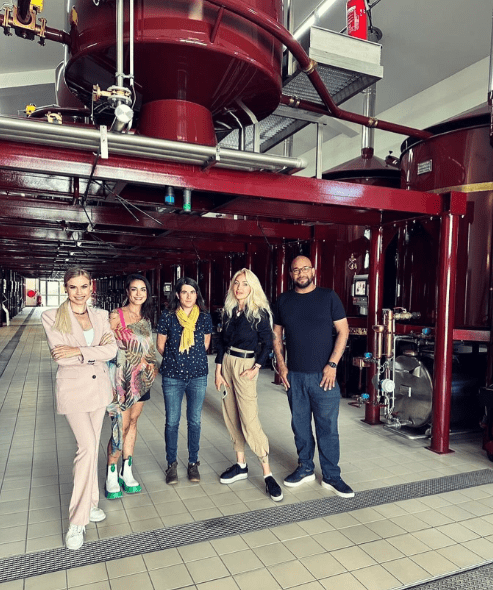
An exciting tidbit emerges: distillation must be completed before March 31. Unable to use sulfur, they rely on colder weather to prevent the wine from spoiling. Both clear wine and wine with lees are used for a richer aromatic profile. Before distillation, the wine is decanted and lightly filtered, keeping some lees to enhance the aromatic profile. The aim is to keep all the lees and distil with them to increase the number of esters and fatty acids, even though it makes the process more expensive and labour-intensive as it is manual. Their patented “Intensity” distillation process truly sets this house apart. This innovative technique allows for selecting the most aromatic fractions during the second distillation, resulting in eaux-de-vie that are up to seven times more aromatic than those produced through standard methods. The pot stills’ capacity is impressive—they can hold up to 20,000 litres, but 2,500-liter stills are used here. The distillation cycle is longer due to the inclusion of lees.
In the ageing cellars, surrounded by rows of oak barrels, two charming concepts are introduced:
“Every year, we lose about 2% of our spirit to the angels. It’s the price we pay for the magic that happens in these barrels.” The heady aroma permeating the air is the angels’ share made manifest.

The ageing process in oak casks focuses on natural aromas and flavours, with a balanced profile of four axes: oak, fruit, spice, and flowers. Fine-grain oak from the Limousin region is used exclusively. A tasting of eaux-de-vie at different stages of ageing allows one to experience firsthand the transformative power of time and oak.
The fourth day dawns with a sense of anticipation – it’s time to step into the shoes of a Master Blender. The six crus of Cognac are introduced, with a focus on the four that this house primarily works with:
Tasting eaux-de-vie from each cru reveals their distinct personalities. In the blending room, surrounded by an array of glasses, pipettes, and decanters, the challenge begins: to create a unique blend from four glasses, each from a different cru. Under the watchful eye of Julie Landreau, Cellar Master, the experimentation begins. A dash of Fins Bois for structure, a generous pour of Borderies for that signature floral note, a touch of Petite Champagne for elegance, and a whisper of Grande Champagne for finesse. The process offers a deep appreciation for the nuanced art of blending. It’s a delicate balance of science and intuition, requiring a keen nose and palate and an understanding of how different eaux-de-vie will evolve together over time.
The house focuses on blends rather than vintages, distilling by cru to maintain the integrity of each type of soil.
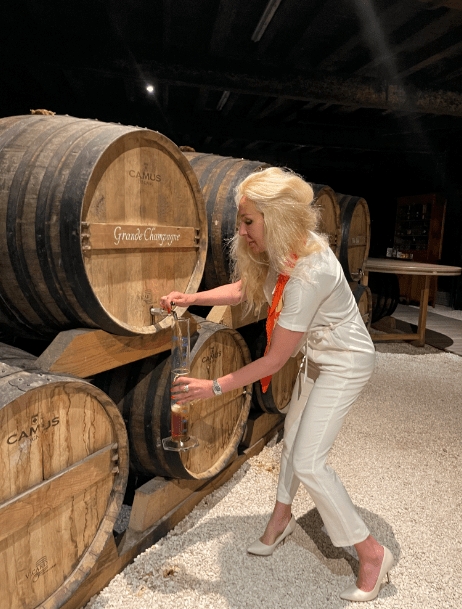
With the blend perfected, it’s time to visit the ageing cellars to fill a personal bottle directly from a cask. As the rich, amber liquid flows, there’s a sense of pride and accomplishment. This unique creation expresses the journey into this world of fine spirits.
The day concludes with a celebratory tasting, sharing creations with fellow travellers and the team. It’s a moment of conviviality and shared passion, embodying the spirit of the house.
The final day grants access to the hallowed workshop. This is where the most extraordinary creations come to life – masterpieces that pay homage to prominent figures, literature, architecture, music, and culture. One of the master craftsmen, eyes alight with passion, explains: “Here, we push the boundaries of what our spirit can be. It’s not just about taste – it’s about creating a complete sensory experience.”
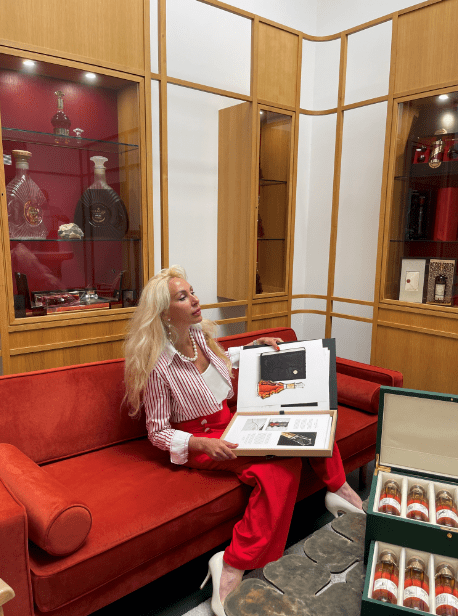
Throughout the day, some of the most exceptional creations are unveiled:
The set is presented in an exclusive organ-shaped display made from pewter and staves from barrels that once contained the house’s spirits.
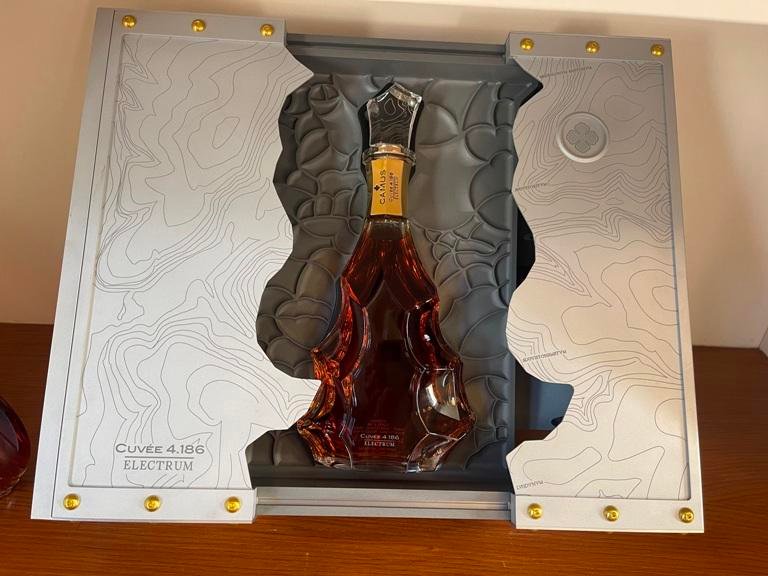
Examining these masterpieces, it’s clear how each one tells a story, not just through the liquid it contains but through every aspect of its presentation. It’s a holistic approach to luxury that engages all the senses.
The house’s approach to quality assurance is equally impressive, including using gas and liquid chromatography to monitor and maintain flavour profiles. Their commitment to sustainability is evident, with environmental certification aimed for 100% by 2028 and the implementation of biofuel tractors and AI in spraying.

The journey concludes with a farewell dinner, during which spirits are experienced in unconventional ways.
It begins with a tasting of chilled spirit, a revelation that challenges preconceptions about how it should be enjoyed. Then, a series of innovative cocktails are introduced:
Each cocktail is a testament to the house’s rule-breaking spirit, demonstrating that even a drink steeped in tradition can be excitingly contemporary. As glasses are raised for a final toast, there’s a reflection on the journey. These five days have offered knowledge and a profound appreciation for the artistry, science, and passion that goes into every drop. It’s clear why this house is renowned for producing measurably aromatic spirits, boasting a superior, well-balanced complexity and a long, lingering finish. Departing with a deeper understanding, a bottle of a unique blend, and memories that will last a lifetime, you’ll also have a new perspective on what it means to create something truly exceptional. In this world, true artistry knows no bounds when creating the extraordinary.

Reflecting on this extraordinary journey, I find myself enriched with knowledge and deeply inspired. The passion, craftsmanship, and dedication behind every drop of Camus cognac is truly awe-inspiring. This experience has not only deepened my appreciation for fine spirits but has also ignited a newfound admiration for the art of cognac-making.The Alexa Camus Golden Vines® Scholarship program is an incredible opportunity for those looking to immerse themselves in the world of spirits. I wholeheartedly recommend this experience to anyone passionate about the craft. It’s more than just a tasting tour; it’s a transformative journey that will forever change how you perceive and appreciate cognac.

To those considering applying for this scholarship: do it. The knowledge you’ll gain, the experiences you’ll have, and the connections you’ll make are invaluable. Camus Cognac has not just won my admiration; it has earned me a lifelong enthusiast. This is an adventure not to be missed for anyone serious about the world of fine spirits.
12.12.2025
10.12.2025